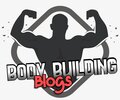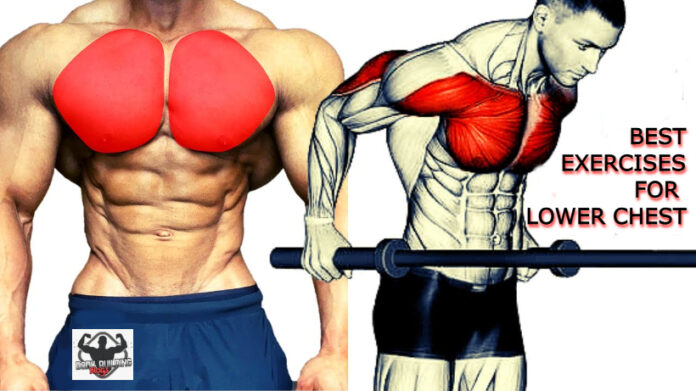Most lifters place a lot of emphasis on the upper and middle pectoral muscles in order to develop a muscular, attractive chest. Many people ignore the lower chest, which is essential to getting that well-rounded, sculpted appearance, even though pressing exercises like the bench press and incline press take center stage in exercise regimens. A well-defined lower chest makes the pecs look fuller, draws attention to the area beneath the chest, and improves the appearance of the entire upper body.
If you’ve ever questioned why, even after intense benching, your chest appears flat or incomplete, it could be because you haven’t properly targeted your lower pecs. The good news is that creating this space doesn’t need a complete makeover; a few well-chosen exercises performed correctly can have a significant impact.
The significance of strengthening the lower chest, its anatomy, and the top three exercises for a defined lower chest that you can incorporate into your training regimen immediately are all covered in this blog.
The Lower Chest Anatomy
You must comprehend the structure of the chest muscles in order to properly train the lower chest.
The pectoralis major, a big, fan-shaped muscle, makes up the majority of the chest muscles. Its two main heads are:
- Your chest appears “upper shelf” thanks to the clavicular head, which extends from the clavicle.
- The middle and lower chest, or sternal head, extends across the rib cage and is attached to the sternum. The bottom part of your chest is made up of the lower fibers.
The angle of movement is crucial when working on the lower chest. Exercises that push weight in a decline motion (down and away from the body) are the most effective for targeting the lower pecs because the muscle fibers there run downward.
Why Work on Your Lower Chest?
A lot of lifters concentrate on flat and incline pressing, which mainly strengthens the middle and upper chest. Ignoring the lower pecs results in:
- Unbalanced physique: You may have a top-heavy chest with little definition underneath.
- Flat appearance: The distinction between your abs and pecs isn’t clearly defined if you lack lower chest mass.
- Strength limitations: Stronger pressing movements are a result of developing all pec regions.
Exercises for the lower chest will help you develop a fuller, more 3D chest that looks fantastic from all sides.
The Top 3 Lower Chest Workouts for Sculpted Pecs
Although there are numerous ways to strengthen the chest, these three exercises are the best at working the lower part of the pecs.
1. Bench Press with Decline Barbell
One of the most traditional lower chest exercises is the decline bench press. You can change the pressing angle and direct attention to the lower pec fibers by adjusting the bench to a decline angle, which is roughly 15 to 30 degrees.
How to Complete It:
- Secure your legs beneath the pads while lying on a decline bench.
- Hold the barbell with a slightly wider grip than shoulder-width.
- Slowly lower the bar to the lower portion of your chest, just above the sternum, after unracking it.
- Controllably press the bar upward until your arms are fully extended.
Advice:
- Control the movement rather than bouncing the bar off your chest.
- For safety, use a spotter when lifting heavy objects.
- To protect your joints, keep your elbows at a 45-degree angle.
The Reason It Works
This is the ultimate lower chest exercise because the decline angle is precisely in line with the lower pec fibers. In comparison to flat or incline bench presses, it also enables you to lift heavier weights, which promotes greater growth.
2. Leaning forward and performing chest dips
Another effective exercise for developing the lower chest is bodyweight dips. During dips, you can highlight your lower pecs rather than just your triceps by bending forward a little.
How to Complete It:
- Take hold of the parallel dip bars and raise yourself.
- Make a 30 degree bend in your torso.
- Bend your elbows until your upper arms are parallel to the floor, then lower your body.
- Squeeze your chest at the top and push yourself back up.
Advice:
- To keep your lean forward, keep your legs slightly behind you.
- Don’t drop too quickly; instead, control the descent.
- Use a dip belt to increase resistance if bodyweight dips are too easy.
Why It Works:
Dips are bodyweight equivalent to a decline bench press because they simulate a decline pressing motion when performed with a forward lean. They create that distinct lower chest line in addition to gaining muscle.
3. Dumbbell Flyes in Decline
Flyes concentrate on contracting and stretching the chest muscles to help define and shape them, whereas presses increase muscle mass. The lower chest is the specific target of the decline dumbbell flye.
How to Complete It:
- Hold a dumbbell in each hand while adjusting a bench to a decline angle.
- With your palms facing one another, begin by pressing dumbbells above your chest.
- Lower the dumbbells slowly in a broad arc until your chest feels deeply stretched.
- Squeeze your pecs at the top as you raise the weights back up in the same arc.
Advice:
- To prevent shoulder strain, use a moderate amount of weight.
- Throughout, maintain a small bend in your elbows.
- When lifting heavy objects, pay attention to form and control.
The Reason It Works
By isolating the chest, flies allow the lower pec fibers to stretch and contract to their maximum potential. They aid in muscle definition and detail when added after vigorous pressing motions.
How to Include These Workout Activities in Your Routine
Incorporate these exercises into your usual chest day to get the best results. An example of a workout that targets the lower chest might look like this:
- 4 sets of 6–8 repetitions for the decline barbell bench press
- Leaning forward, perform three sets of ten to twelve chest dips.
- Decline Dumbbell Flyes: 3 sets of 12–15 repetitions
If you only train your chest once a week, focus on your lower chest during that session. As an alternative, you can incorporate these exercises into your regular chest workout in addition to incline and flat pressing.
Common Errors to Steer Clear of
Steer clear of these pitfalls when working on your lower chest:
- Incorrect Angles: Expecting less pec growth while performing flat or incline presses. Bench angle adjustment is essential.
- Poor Form: Dips become a triceps exercise if you remain too upright. To activate your chest, lean forward.
- Overloading Flyes: Shoulder strain can result from using excessively heavy weights. Flyes are not for maximum strength; they are for isolation.
- Ignoring Volume: A token set of one or two won’t suffice. To see growth, you need to train consistently and at the right volume.
Recuperation and Diet for Chest Development
It’s not just about training. You must properly fuel and recover if you want to develop a defined lower chest:
- Daily protein intake should be between 1.6 and 2.2 grams per kilogram of body weight.
- Caloric Surplus for Growth: Eat more than you expend if you want to gain muscle.
- Rest & Recovery: Do not hit your chest again for at least 48 hours. Muscles develop during rest, not during exercise.
- Sleep: 7 to 9 hours of sleep promotes the growth and repair of muscles.
Concluding remarks
Without focusing on the lower pecs, a strong chest is incomplete. The addition of decline-focused exercises separates a respectable chest from a fully developed, defined chest, despite the fact that most lifters are obsessed with flat and incline pressing.
Your training regimen should include the **3 best exercises for lower chest: decline dumbbell flyes, dips, and decline bench press. They will create the striking lower pec definition that gives your chest a polished, attractive appearance when done correctly and in conjunction with wise diet and recuperation.
Keep in mind that bodybuilding is about developing symmetry, balance, and detail rather than just lifting big weights. Your chest will soon appear more complete and stronger if you train wisely and consistently.


